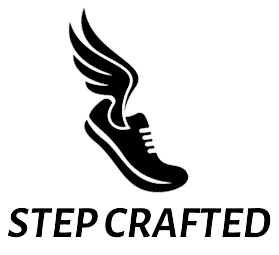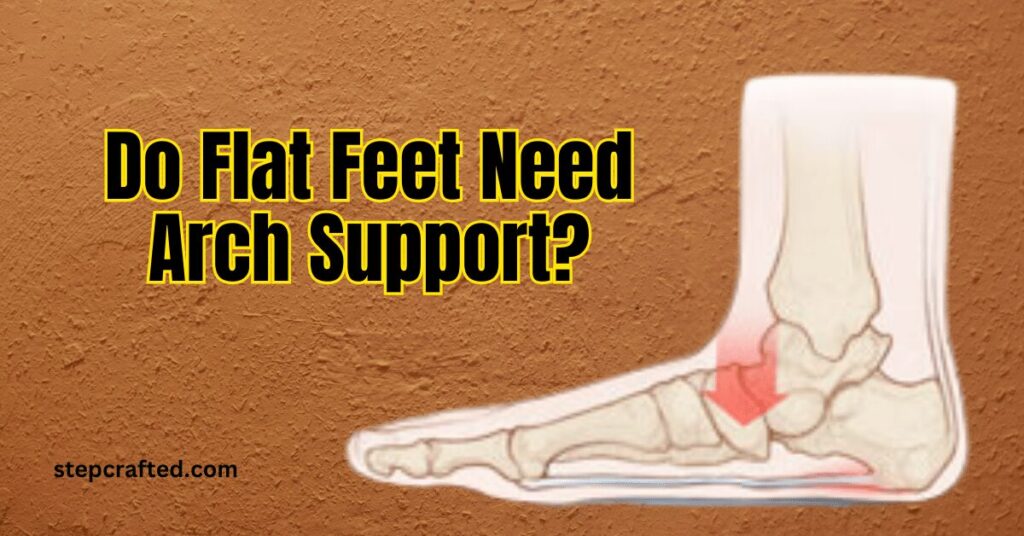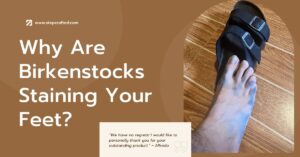Should You Wear Arch Supports if You Have Flat Feet?
Yes, wearing arch supports can be beneficial for individuals with flat feet. Flat feet lack the natural arch, leading to issues like foot pain, overpronation, and alignment problems affecting knees and hips. Do Flat Feet Need Arch Support?
Contents
ToggleArch supports help by providing the necessary support to compensate for the missing arch, reducing strain on the feet during walking or running. They can improve foot posture, distribute pressure more evenly, and enhance comfort.
However, it’s essential to choose the right type of arch support tailored to your specific needs, and in some cases, custom orthotics might be recommended. Consulting with a healthcare professional can ensure you find the most suitable option.
What Happens When We Walk Or Run?
When we walk or run, our feet absorb impact, support weight, and propel our bodies forward. Flat feet, lacking the natural arch, can lead to improper foot mechanics, causing overpronation, where the foot rolls inward excessively.
This can increase the risk of injury and lead to discomfort in the feet, ankles, knees, and even the back. Using arch supports for flat feet can mitigate these issues by providing the necessary support to mimic the foot’s natural arch.
This improves foot alignment, distributes pressure evenly, reduces overpronation, and enhances overall foot function during walking or running, making arch supports beneficial for those with flat feet.
Reasons For Overpronation
Overpronation often results from flat feet due to the absence of a natural arch, leading to excessive inward foot rolling. This condition can cause uneven weight distribution and increased strain on the ankles, knees, and hips.
Arch supports can correct overpronation by providing the necessary support, improving alignment, and reducing injury risk.
What Are The Best Arch Support Insoles For Flat Feet?
The best arch support insoles for flat feet typically combine strong arch support, deep heel cups, and cushioning for comfort. Popular choices include:
- Superfeet Premium Insoles: Known for their durable support and versatility across various shoe types.
- Powerstep Pinnacle Orthotic Insoles: Offer a balance of flexibility and support, ideal for alleviating flat foot discomfort.
- Spenco Total Support Max Shoe Insoles: Provide firm support and motion control for severe pronators.
- Sof Sole Men’s Airr Orthotic Full-Length Performance Shoe Insoles: Great for active individuals, offering both arch support and shock absorption.
- Dr. Scholl’s Custom Fit Orthotic Inserts: Customizable to your foot’s shape, providing targeted support and cushioning.
The Basics
- Understanding Flat Feet: Flat feet, or fallen arches, occur when the arches of the feet flatten, leading to potential discomfort and pain. Identifying whether you have rigid or flexible flat feet is crucial for selecting the right insoles.
- Importance of Arch Support: Proper arch support insoles can alleviate pain, correct overpronation, and improve walking or running mechanics. They distribute weight evenly across the foot, reducing strain on specific areas.
- Selection Criteria: Look for insoles that offer firm support, a deep heel cup for stability, and cushioning for comfort. Material quality and durability are also important factors.
- Custom vs. Over-the-counter: While over-the-counter insoles are effective for many, some individuals may require custom orthotics, especially if they have specific foot issues or severe flat feet.
- Consultation Recommended: Consulting with a healthcare professional or podiatrist can help determine the best type of insole for your flat feet, ensuring long-term comfort and foot health.
What You Need To Know
Choosing the best arch support insoles for flat feet requires understanding your foot type and specific needs. Opt for insoles that offer firm support, proper cushioning, and a deep heel cup.
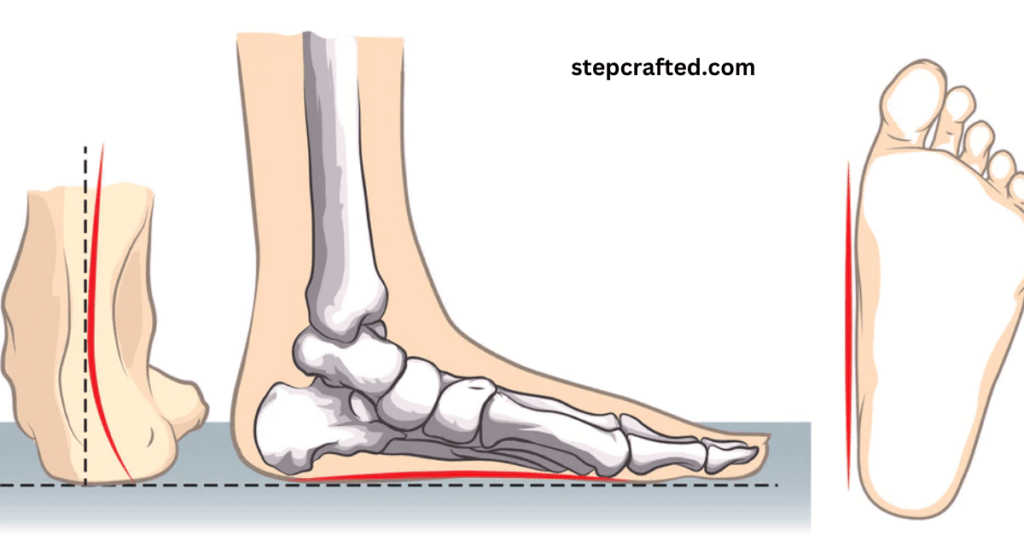
Consider your daily activities and whether over-the-counter options suffice or if custom orthotics are necessary. Consultation with a podiatrist can provide tailored recommendations.
What Causes Flat Feet?
- Genetic Factors: Some individuals are born with flat feet, inheriting the condition from their parents.
- Aging: The natural aging process can weaken the tendons and structures in the foot, leading to collapsed arches.
- Weight Gain: Excessive weight puts additional pressure on the arches, potentially causing them to flatten over time.
- Injury: Foot or ankle injuries can damage the tendons supporting the arch, leading to flat feet.
- Medical Conditions: Certain conditions like diabetes, rheumatoid arthritis, and cerebral palsy can contribute to the development of flat feet.
- Pregnancy: Hormonal changes during pregnancy can loosen foot ligaments, potentially leading to flat feet.
- Prolonged Standing: Regularly standing for long periods on hard surfaces can strain foot muscles and tendons, increasing the risk of flat feet.
Are Flat Feet and Fallen Arches The Same Thing?
- Definition: Flat feet and fallen arches essentially refer to the same condition, characterized by the collapse or lack of a visible arch in the foot when standing.
- Terminology Use: “Flat feet” is commonly used to describe the condition from birth or developed over time, while “fallen arches” often refers to arches that have collapsed due to strain, injury, or wear over time.
- Symptoms Similarity: Both conditions exhibit similar symptoms, including foot pain, discomfort while walking or standing, and potential alignment issues affecting the ankles, knees, and hips.
- Cause Variation: While the outcomes are similar, the term “fallen arches” might specifically highlight the arch’s deterioration from a previously normal state, whereas “flat feet” can be a condition present from birth.
- Treatment Approach: The treatment for both flat feet and fallen arches involves improving foot support through exercises, wearing appropriate footwear, and possibly using orthotic inserts to alleviate discomfort and prevent further complications.
What Injuries Are Caused By Flat Feet?
- Plantar Fasciitis: Flat feet can strain the plantar fascia, the band of tissue that runs along the bottom of your foot, leading to inflammation and heel pain.
- Achilles Tendonitis: The misalignment caused by flat feet can increase tension in the Achilles tendon, causing pain and inflammation at the back of the heel.
- Shin Splints: The altered biomechanics of flat feet can lead to shin splints, characterized by pain along the inner edge of the shin bone.
- Posterior Tibial Tendon Dysfunction (PTTD): Flat feet can overwork the posterior tibial tendon, which supports the arch, leading to pain and swelling on the inside of the ankle.
- Bunions and Hammertoes: The improper foot alignment associated with flat feet can contribute to the development of bunions (a bony bump that forms on the joint at the base of the big toe) and hammertoes (a deformity that causes the toe to bend or curl downward instead of pointing forward).
- Knee, Hip, and Back Pain: The lack of proper foot arch can affect the alignment of legs, leading to pain in the knees, hips, and lower back due to the altered distribution of body weight and walking pattern.
How Do I Relieve Flat Feet Pain?
- Arch Support Insoles: Use insoles designed for flat feet to provide necessary arch support, distribute pressure evenly, and alleviate pain.
- Orthotic Devices: Consider custom orthotics prescribed by a podiatrist for tailored arch support that addresses specific foot structure and pain issues.
- Stretching Exercises: Regular stretching of the Achilles tendon and calf muscles can reduce strain on the foot’s arch and relieve discomfort.
- Strengthening Exercises: Strengthening the muscles around the foot and ankle can improve foot stability and reduce pain associated with flat feet.
- Proper Footwear: Choose shoes with adequate arch support and cushioning to support flat feet and reduce impact while walking or standing.
- Rest and Ice: For immediate pain relief, rest your feet and apply ice to reduce inflammation and swelling.
- Weight Management: Maintaining a healthy weight can lessen the pressure on your feet and minimize pain caused by flat feet.
- Avoid High-Impact Activities: Temporarily limit activities that put excessive stress on your feet, such as running or jumping, until pain subsides.
- Physical Therapy: A physical therapist can provide targeted exercises and treatments to relieve flat feet pain and improve foot function.
- Surgery: In severe cases, where conservative treatments don’t provide relief, surgery may be considered to correct the underlying structure of the foot.
Strengthen And Stretch The Foot
Strengthening and stretching the foot is key for managing flat foot discomfort. Exercises like toe curls, heel raises, and arch lifts can strengthen foot muscles, enhancing support for the arch.
Stretching exercises, such as the Achilles stretch and plantar fascia stretch, improve flexibility and reduce tension in the foot. Regular practice promotes better foot mechanics, alleviating pain and preventing further foot issues.
Foot Doming
Begin with your foot flat and in a neutral stance on the ground. Activate the “foot core” by drawing up the arch of your foot without lifting your toes.
Initiate this exercise while seated. As you improve, advance to performing it standing, then on one leg, and eventually incorporate hopping.
Heel Raises
Stand in the center of the room, pressing all your toes firmly onto the floor. Raise both heels, shifting your weight onto your toes, and hold for two seconds. Repeat this exercise for two sets of 15 repetitions.
Strengthen And Stretch The Calves And Ankle
To strengthen and stretch the calves and ankle, perform calf raises by lifting your heels off the ground and lowering them. Hold for a few seconds and repeat. For stretching, do calf stretches by extending one leg behind you and pressing the heel into the floor. Hold to feel the stretch.
Can You Build Arches in Flat Feet?
While you can’t physically create arches in flat feet, you can strengthen and support the foot’s structures to improve their function and alleviate discomfort. Exercises like toe curls, arch lifts, and calf stretches can help strengthen and stretch the relevant muscles and tendons, promoting better arch support.
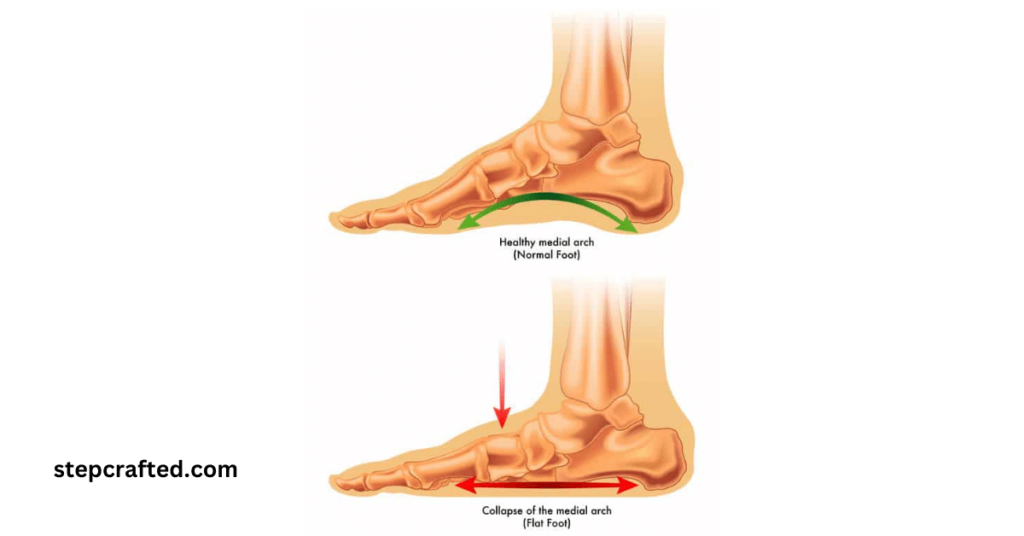
Additionally, using arch support insoles or custom orthotics can provide the necessary support and distribute pressure evenly.
While these measures won’t permanently change the foot’s structure, they can significantly improve comfort and reduce issues associated with flat feet, such as overpronation and pain, allowing for a more functional and pain-free experience. Consulting a podiatrist for guidance is advisable.
Can You Fix Fallen Arches?
- Strengthening Exercises: Specific exercises can strengthen the muscles and tendons supporting the arch, potentially improving its function over time.
- Arch Support Insoles: Using arch support insoles or custom orthotics can provide immediate support and alleviate discomfort associated with fallen arches.
- Physical Therapy: A physical therapist can provide targeted exercises and treatments to improve arch function and reduce pain.
- Proper Footwear: Choosing shoes with adequate arch support and cushioning can prevent further arch collapse.
- Weight Management: Maintaining a healthy weight can lessen the strain on fallen arches.
- Surgery: In severe cases, surgical intervention may be considered to reconstruct the arch.
While complete reversal may not be possible, these measures can often improve the condition and alleviate pain. Consulting a healthcare professional is advisable for a personalized treatment plan.
Are Arch Supports Good for Flat Feet?
Yes, arch supports can be beneficial for individuals with flat feet. They provide essential support, improve foot alignment, and reduce strain, alleviating issues like foot pain and overpronation. However, it’s crucial to choose the right type of arch support tailored to individual needs for maximum effectiveness.
Arch Support For Flat Feet: Do Flat Feet Need Arch Support?
Over 60 million Americans contend with flat feet, which equates to approximately 18% of the U.S. population of about 330 million. A common question among them is whether flat feet require arch support.
According to the Mayo Clinic, the answer is affirmative. Arch supports are not only effective in relieving the pain and discomfort linked to flat feet but can also aid in stretching the Achilles tendon, which is often shortened in individuals with flat feet.
In essence, arch supports offer a solution to a prevalent issue that millions of Americans face.
Flat Feet Support
The X-Brace employs its crossed design to provide targeted support to a crucial area—the plantar fascia.
Its purpose is to apply adequate pressure to prevent painful stretching of the plantar fascia while ensuring proper blood circulation in the foot.
This design minimizes the risk of the device causing uncomfortable skin indentations when used correctly.
More From The Experts
The consensus on the effectiveness of arch support for flat feet isn’t limited to the Mayo Clinic; the National Library of Medicine is abundant with studies affirming its benefits.
One noteworthy study involved 16 college students who were studied while walking uphill and downhill. Notably, these individuals reported reduced pain when using arch support insoles.
Moreover, their bodies required less oxygen to perform these tasks, resulting in decreased muscle fatigue and a lower risk of muscle failure.
In essence, this study confirmed that arch supports are highly advantageous for individuals with flat feet who incorporate them into their footwear.
FAQs
Is it Better to have Flat Feet or Arched?
Most people think flat feet are bad and high arches are desirable. However, whether you have flat feet or high arches doesn’t matter. What matters is how well you can connect to and truly use your feet.
What Type of Shoes are Best for Flat Feet?
The best walking shoes for flat feet have a wide toe box and excellent support in the midfoot to prevent your arch from collapsing further, says podiatrist Nelya Lobkova, DPM
Does Arch Fit Help Flat Feet?
Arch Support for Flat Feet: Many of them probably ask, “Do flat feet need arch support?” According to the Mayo Clinic, the answer is, “Yes.” Arch supports can help not only alleviate the pain and discomfort associated with flat feet but also help stretch someone’s Achilles tendon, which might also help.
Can You Build an Arch in a Flat Foot?
In most cases, yes! In our experience, we’ve found that a combination of certain foot exercises and proper foot and toe positioning is a helpful and effective way to build or restore your main foot arch
Are there any Advantages to Flat Feet?
One key advantage of having flat feet is the ability to absorb shock effectively as a result of increased flexibility in the arch, which aids in controlling and mitigating the impact upon landing.
Are Flat Feet Healthy?
Because flat feet cause your weight to be distributed abnormally, other joints and muscles take responsibility for keeping you upright. As a result, you may experience back and leg pain that can interfere with daily tasks, exercise, and activities you enjoy.
What Celebrities have Flat Feet?
Stars like Sarah Jessica Parker, Vince Vaughn, and Elton John have openly discussed their flat feet challenges. It’s essential to remember that many people, including celebrities, may have flat feet, but it doesn’t define them or limit their abilities
How Do People with Flat Feet Walk?
When people have flat feet, their feet may roll to the inner side when they are standing and walking. This is known as overpronation, and it may also cause the feet to point outward. People often develop flat feet in childhood.
